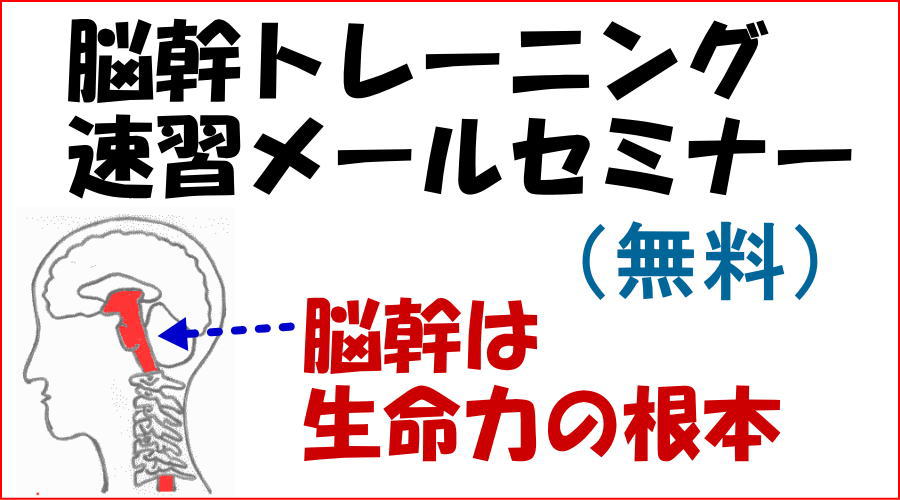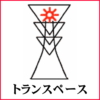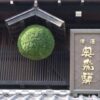感想2・序文英訳(『日本語は神である』 (下岡清二)

「学友」下岡清二さんから「序文英訳」をお寄せ戴きました。
訳者が変われば表現も変わります。自分だったら、どう訳すかなどと考えながら、この訳文を味わってみるのも一興でしょう。本書序文をプリントして、この訳文と照らし合わせてご覧になるとよいでしょう。
新版と旧版の序文は、一部変更がありますが、大部分は変わりません。この英訳文は充分に楽しんで戴けるでしょう。
下岡さんの感想文「極意というものは知ってしまえば簡単なもの」も、翻訳者の発想がなかなか愉快です。併せてお読みになるようお勧めします。
ところで「下岡」というのはまさにアップダウン、いやダウンアップですか。アハハ。(昌原容成)
序文英訳(ありがとう日本アップダウン構造)(下岡清二)
Thank You: Japanese Up-Down Structure
(旧版書名『ありがとう日本アップダウン構造)』の英訳)
Preface (序文)
Finally, for the first time since the beginning of the Heaven and the Earth, the Japanese language has revealed its true appearance.
The Japanese grammar has finally revealed its supreme point.
Closely scrutinizing the mere Japanese phrase of “arigato" (meaning “thank you") has enabled me to reach its supreme point at last.
Exactly because that supreme point exists, the Japanese language can be like the way it is.
Exactly because that supreme point exists, you can also identify the reason of existence of the Japanese archipelago and people.
Without the supreme point, in fact, the Japanese language would break down. Without it, the reason for the Japanese archipelago and people would get lost. That is, what I want to call the “national atmosphere" of Japan would get lost.
Since the period from the end of the Edo era into the Meiji era [in the middle of the 1800s], a large number of what they call “Japanese grammar" have been created by modeling after the grammars of western languages. Unfortunately, however, none of these versions of “Japanese grammar" is worthwhile being called genuine Japanese grammar.
The existing versions of Japanese grammar actually lack the supreme point that makes the Japanese language be the way it should be. And you cannot expect a flavor of Japan’s “national atmosphere" to arise from any of the existing versions.
Since ancient times, traditional Japanese songs known as “yamato-uta" have been considered to be something that could move the Heaven and the Earth without using any physical force and make even a demon feel like crying, according to the introduction to the collection of traditional Japanese songs known as “Kokinshu." Ancient people did believe in the power of the spirit of words in the Japanese language.
In addition, it has always been said that the Japanese language “originated at the time of the beginning of the Heaven and the Earth" (according to the above introduction to the “Kokinshu" collection of songs) and that “Japan is a country blessed with the sprit of words" (according to another collection of Japanese traditional songs known as “Man’yoshu").
Nevertheless, the true appearance of the Japanese language has been deeply veiled in mystery until only today. A story that the Japanese language that originated at the beginning of the Heaven and the Earth would shake the unexplainable spirit of words and move even the Heaven and the Earth has been handed down simply by tradition — on a short string with vain hope.
Thus far, nobody has ever thought that it would become possible to scrutinize and clarify the power of the sprit of words by reason.
Now, however, the Japanese language has completely revealed its true appearance.
The rock door of mystery has now been opened to reveal the supreme point of the Japanese language.
Then, what is the “supreme point"?
It will be explained in detail in the main part of this book.
To help you get ready for understanding that supreme point, let me here outline one of the keywords: “Up-down Structure."
Members of an uncivilized tribe are known for the good skills with which they use bow and arrow. They shoot arrows at fish from a boat where they are on. The problem is that the fish they want to catch are covered with thick scales — too thick to be penetrated by any arrow when it is shot straight from the horizontal direction. Once a fish is located, therefore, the bowstring is drawn and released to shoot an arrow up into the sky. The arrow first goes up and then goes down, stabbing the back of the fish.
By analogy, the Japanese language is likened to this way of bow-and-arrow handling, because it first goes up and then goes down. It never rushes directly at the target.
Let’s call this structure unique to the Japanese language the “Up-down Structure."
[figure(s), omitted]
By contrast, the English language has quite a different structure; it never strays from the route. It actually takes a shortcut to go directly to the target.
Let’s call this structure unique to the English language the “Shortcut Structure."
[figure(s), omitted]
The upper part of the Up-down Structure is in a deep layer of unconscientiousness — one that the Japanese have never recognized.
The truth is that the supreme point of the Japanese language has been veiled deep in the upper part of its Up-down Structure.
The supreme point has never been recognized by the Japanese people, although it has always had a major influence on their mind and soul.
It goes without saying that the supreme point has never been understood by people in the rest of the world.
Japan’s tragedy is due to the fact that the Up-down Structure has been handled as if it were the Shortcut Structure.
Attempting to explain the logic of the Up-down Structure with that of the Shortcut Structure would eventually fail, because the latter does not handle the deep layer of the former.
For this reason, Japan has often been labeled as a “nation of no identity" or a “mysterious nation." Another complaint is that “Japan is embarrassing the rest of the world." The phrase “Japan Problem" is thus spreading throughout the world.
Not a few Japanese people, in fact, say that Japan’s traditional culture is something curse; they argue that Japan, which successfully modernized itself by modeling after the West, is an “ambiguous nation" because it still sticks to its traditional culture. To these people, it seems to be ideal to completely get rid of Japan’s traditional culture until Japan becomes a completely westernized country. Their feeling is quite superficial, indeed. Definitely, such a thing would never happen as long as the Japanese continue to use the Japanese language.
After all, nobody has ever recognized the Up-down Structure lying deep in the Japanese language.
The Shortcut Structure prevents you from seeing the deep layer of the Up-down Structure. Function always appears from the unseen deep layer so that the logic on the surface does not work, which means that you have difficulty understanding “ambiguous Japan."
Japan has been exactly a “nation of no identity" to the eyes of people in Western countries, as well as Japanese people having modern intelligence.
At this moment, however, this book has successfully revealed Japan’s Up-down Structure having a deep layer. And it has revealed the supreme point that had been hidden deep inside the Up-down Structure.
No longer will you ever hear anyone complain that Japan is a “nation of no identity" or a “mysterious nation" or that “Japan is embarrassing the rest of the world."
This book insists that using the Up-down Structure allows you to logically explain the features of anything Japanese at all, including not only the Japanese language but also Japan’s religious minds, scientific thoughts, fine arts, politics, economy, and many others. The book also insists that Japanese people are unconsciously affected by the supreme point that is hidden deep inside the Up-down Structure.
Except for those suffering from identity complex, typical Japanese people could feel and understand the essence of Japan.
What is required now, however, is not understanding with feeling but understanding with logic. It is now required that you understand the essence of Japan with logic and explain it with logic.
To this end, in fact, the Up-down Structure will work quite wonderfully.
The Up-down Structure enables Japanese people to logically explain the “face and mind" of Japan, which had been difficult to explain, even to non-Japanese people. It enables you to understand and explain what Japan, a nation of mystery, should be like.
The Up-down Structure is exactly the fundamental concept of Japanology. The very supreme point hidden deep inside the Up-down Structure is the ultimate principle underlying the presence of Japan in general.
The path of a new-born Japan will open if you understand that the wholeness of anything Japanese forms the Up-down Structure and recognize that the supreme point is hidden deep inside the Up-down Structure.
This will also lead to the opening of the path of a new-born Earth.
By proudly heralding the age of a new-born Japan and of a new-born Earth, the author of this book would like to dedicate the book to the minds of Japanese people and to the minds of global people.
(以上)
下岡 清二
<昌原から一言>
いやあ、よく訳していただきました。
アップダウン構造の英語版をいずれ出版しなければならないと思いつつも、真正面から取り組むには至らず、今日に至りました。下岡さんの訳業に刺激されて、少しは英訳に励もうかと思います。
日本文化を世界に発信する、と言いますが、何を発信するのか、その中核となるものが見極められなかったのが、これまでの歴史ではないでしょうか。
日本文化の中核は、間違いも無く「日本語アップダウン構造」です。そして、それは「日本文化」アップダウン構造であり、「日本総体」アップダウン構造でもあるのです。
下岡さんのように英語堪能な方々が、日本文化と日本語文法の精髄アップダウン構造を広く海外に紹介していただきたいと願っております。
この訳文が、一つのきっかけとなりますように願わずにはおれません。
下岡さん、どうも有り難うございました。






 /
20歳から科学技術翻訳士として技術翻訳の世界に入り、以後プロ翻訳数十年。神道を行じつつ、日本語と英語の構造の違いに悩まされた結果
/
20歳から科学技術翻訳士として技術翻訳の世界に入り、以後プロ翻訳数十年。神道を行じつつ、日本語と英語の構造の違いに悩まされた結果